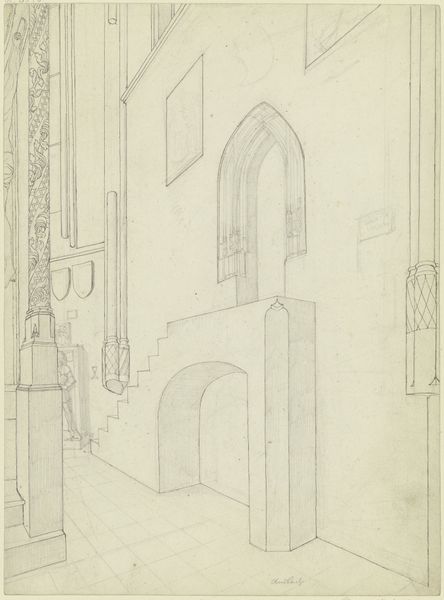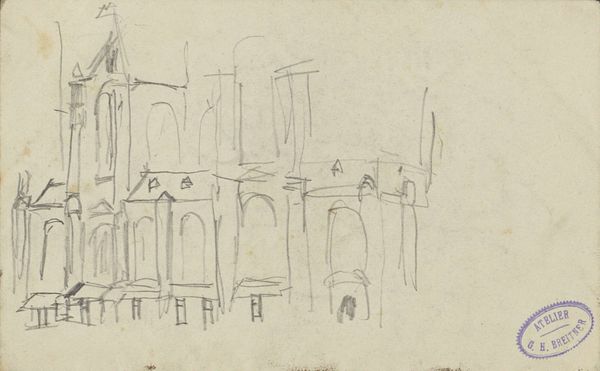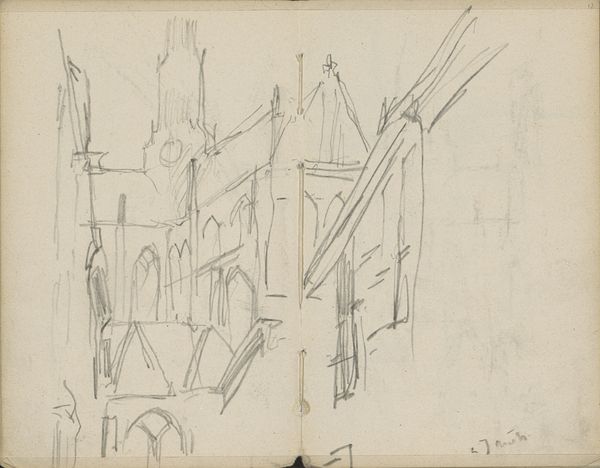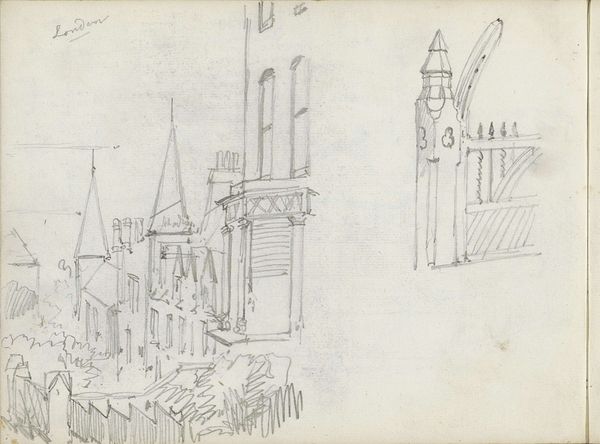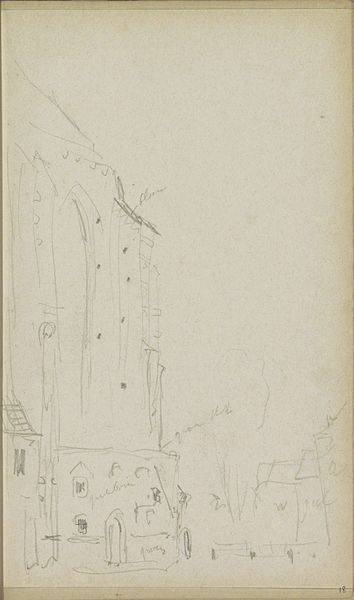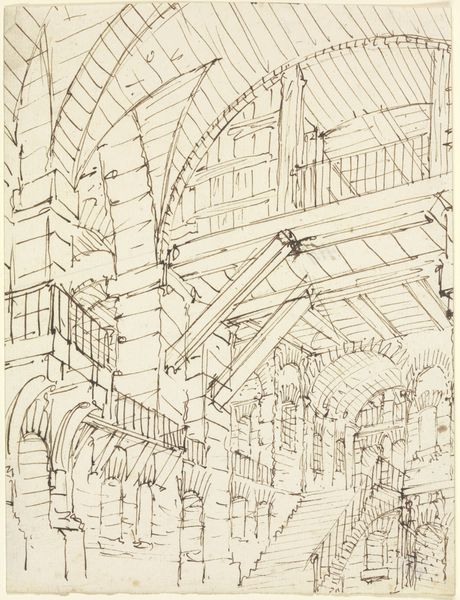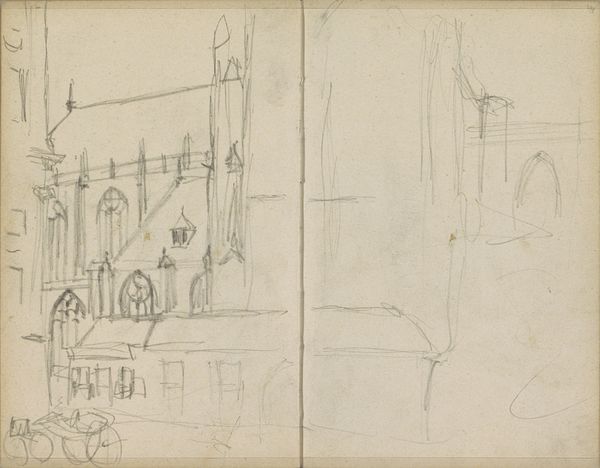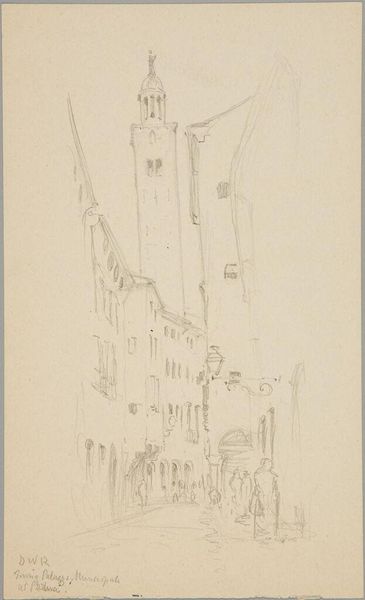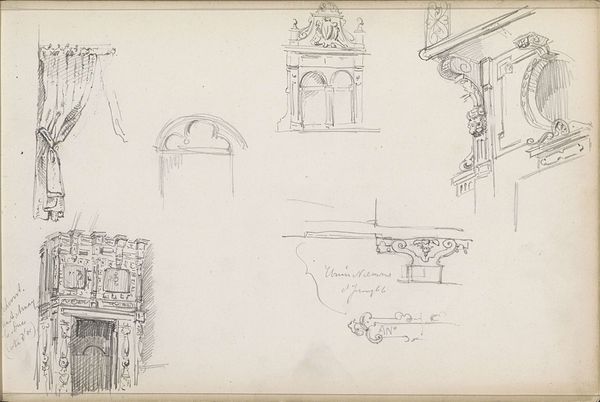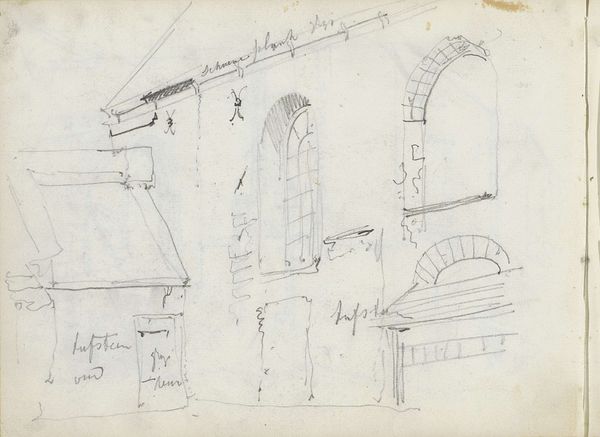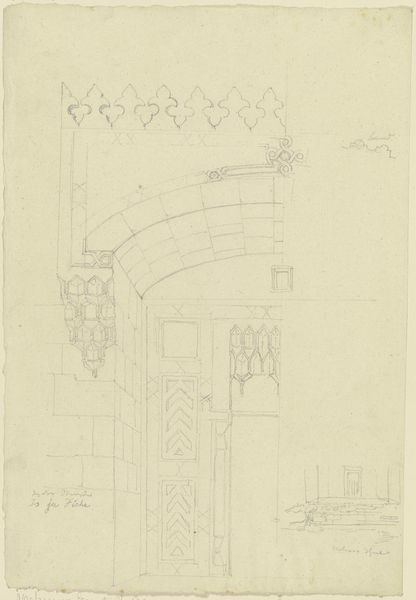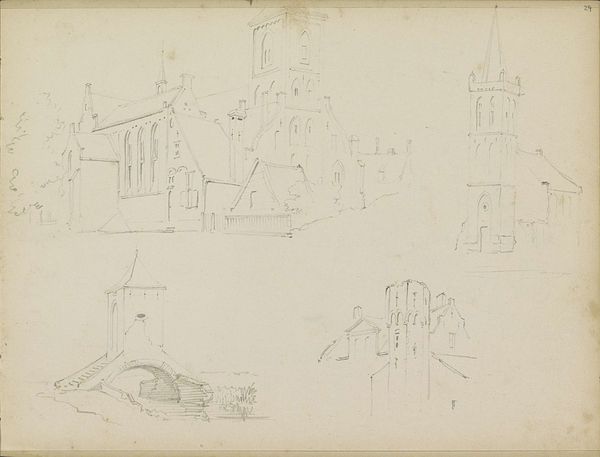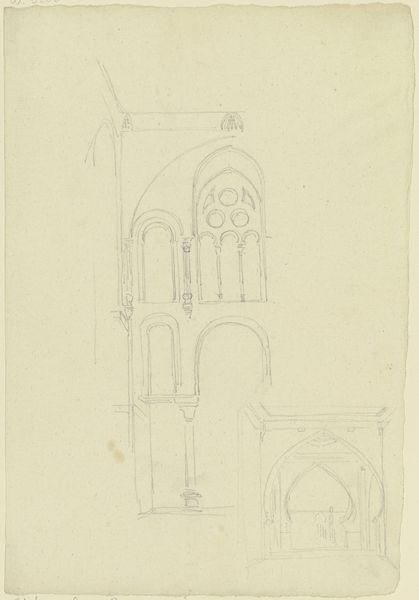
Copyright: Rijks Museum: Open Domain
Editor: This is "Kathedralen," a drawing by Carel Adolph Lion Cachet from around 1895, currently residing at the Rijksmuseum. The overlapping architectural forms give it a sense of dynamism. What’s your take on this sketch? Curator: Well, sketching like this embodies a fascinating intersection of artistic freedom and architectural power. Cachet, though working in a time of increasing secularization, clearly remains captivated by cathedrals, monuments central to social and political life for centuries. Do you see how the sketch feels incomplete, almost like he is contemplating multiple perspectives, hesitant to settle on a single view? Editor: I do now that you mention it. Almost like he's questioning the established grandeur. Curator: Exactly! Cathedrals were powerful symbols of institutional authority, so for an artist in the late 19th century to fragment their image suggests a critical re-evaluation. Was Cachet questioning the Church’s power, perhaps alluding to the decline of its influence in an increasingly modern world? This isn’t just an architectural study; it’s a sociopolitical statement in the making. Editor: So, his choices aren't merely about composition but reflect a larger cultural shift? Curator: Precisely! The sketch is the seed of an idea, born from a historical context where the roles and perceptions of these institutions are actively being renegotiated. It is this tension – between traditional power and modern skepticism – that truly defines the artwork. Editor: That's a perspective I hadn't considered! I’ll definitely look at sketches differently now, as echoes of societal change, not just pretty lines. Curator: It’s rewarding to unpack these layers and consider the socio-political echoes that even preliminary artwork embodies. Art doesn't exist in a vacuum; it’s a reflection of the society that creates and interprets it.
Comments
No comments
Be the first to comment and join the conversation on the ultimate creative platform.
